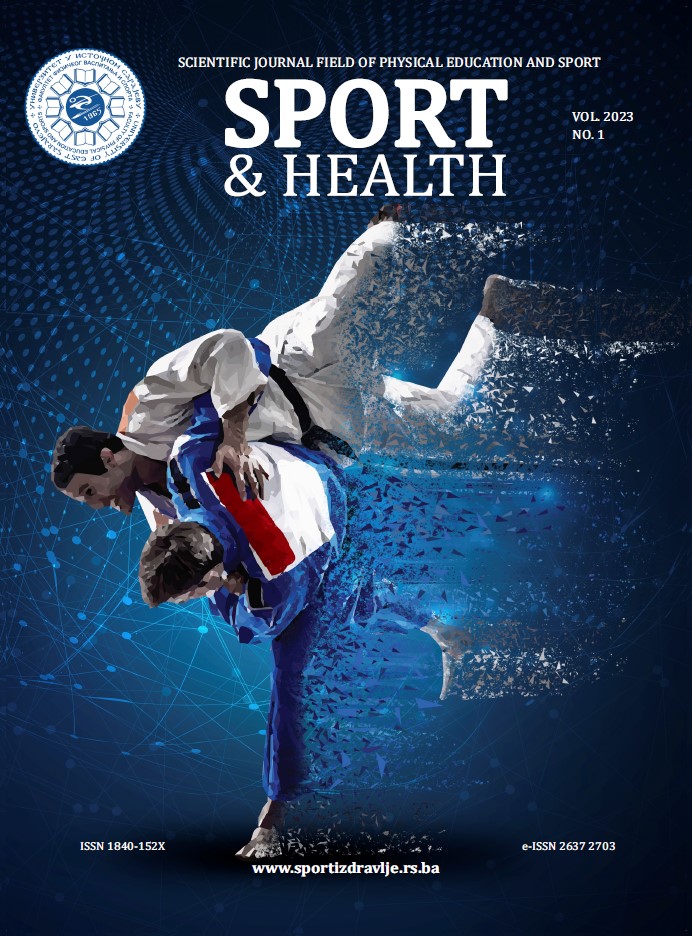SPECIFIC FORCE-TIME CHARACTERISTICS OF LEG EXTENSORS IN ELITE VOLLEYBALL PLAYERS BOTH GENDER IN SERBIA
DOI:
https://doi.org/10.7251/SIZ2301089IAbstract
Adequate preparation of the leg extensors is highly important especially in sports which involve several jumping techniques. Information on force-time characteristics of the certain muscle group is the basic information on athlete ability which are gathered with intention to control the athlete`s physical preparation. The aim of this paper was to determine descriptive and sexual dimorphism of different specific isometric characteristics of force-time model related to leg extensors in elite volleyball Serbian players. Nineteen male (height=199.21±4.94 cm, mass=91.05±6.95 kg, age=22.58±2.97 years) and twenty female (height=184.65±7.00 cm, mass=70.65±6.15 kg, age=22.92±3.73 years) elite volleyball players performed a standardized “isometric leg press” test in order to assess the characteristics of isometric force from their leg extensors. The measurement range was defined by 8 variables according to 4 different dimensions – 1) the level of achieved force, 2) rate of force development, 3) the time necessary for reaching the certain level of force, 4) different index parameters; covering the space of basic, specific and special characteristics of leg extensors muscle force. MANOVA established that there is a significant difference of p < 0.05 in all contractile characteristics among observed sub-samples at the level of Wilks´ Lambda 0.098, F = 25.814, p = 0.000. The present findings demonstrated that the male volleyball players produce higher values than the female players in all contractile characteristics of covering the space of specific and special characteristics of leg extensors muscle force. It is highly likely that these differences cannot be explained only on the basis of sexual differences, but on the basis of overall intensity and volume and/or type of power and strength training during the training process as well, factors which deserves attention in work with athletes. The obtained data can be used as a reverse information on characteristics of a certain leg extensors contractile ability in elite volleyball players in order to follow fitness profile of athletes, to control and optimize training process.

